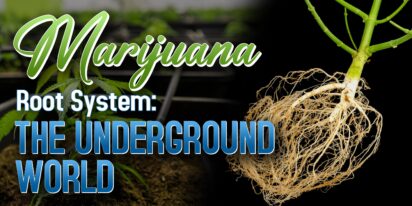
Are You 18 Or Over?
YesOr
No By clicking yes, you certify that you are over 18. By using this website, you agree to our legal disclaimer.605+ Cannabis Strains over 20 Breeders worldwide.
Table of Contents

You may have heard that autoflowers can’t be cloned. It may be a shame as it is an efficient and economical way of cultivating Cannabis.
Some people said that it might cause stress to the mother plant, and it can slow down development. It may happen as cutting on the stem is made. So these are the concerns of some people when it comes to cloning autoflowers.
Can you guess if it’s just a myth or not at all? Well, this article will show the real deal about this matter.
The process of cloning Cannabis plants is quite interesting. It would start by getting a ‘cutting’ from the chosen mother plant to produce a new plant. The newborn plant would retain the genetics of the mother plant.
Therefore, cloning is the process that would let growers preserve the genetics of the strains with characteristics that they admire. Some of them attract you to its flavor, and some would let you depend on them due to their effects.
Cloning also economically attracts growers as they don’t need to keep on buying Cannabis seeds. As long as they maintain the robust health of the mother plant, they can just get some cuttings to create a homogeneous version of the strain that you desire.
While there are benefits from this process, there may be a possible downside to this. Some view some limitations when it is applied to cloning autoflowers.
Autoflowering strains have a lot of advantages when it comes to Cannabis cultivation. They’re compact-sized weeds that finish quicker than others. So some growers think that it’s a good idea to clone them.
The cutting for cloning is done during the vegetative phase. Then you can place it in a growing medium of your choice and let it grow roots. Some growers would use hormone powder or gel, but it’s not that necessary.
The cuttings can develop the root system in a matter of 10 days. They will transform into plants that are identical to its source.
It’s easier to start with cloning if you want to reproduce the same Cannabis plant. It will let you skip the sensitive seedling period. If you get it from a feminized plant, you will be able to retain the status.
To analyze why some growers don’t want cloning autoflowers, you have to know some of the traits that set them apart from others. As its name suggests, it flourishes automatically by time rather than environmental elements that photoperiod strains are sensitive about.
Photoperiodic strains require a switch of the amount of light when it’s time to shift from the vegetative stage to the flowering stage. This matter is based on evolutionary differences.
Autoflowers are known to have evolved in the northern hemisphere, an area where there’s only a little sunlight in the entire year. It is the setting that made them automatically flower after a particular period.
So it won’t burden Cannabis cultivators to change light for starting the flowering stage, so a decent yield is attained.
Whereas, photoperiodic strains came from areas near the equator. When they are cultivated indoors, they need a light cycle for them to embark on the flowering period as well as seeding. They need to do it to avoid harsh weather so they can continue with survival.
So, how does genetic difference affect the cloning process of Cannabis? You must remember that cloning will result in a plant, which is the exact duplicate of the mother plant. The clone will copy every bit of the mother, including the age when the cutting was made.
The cutting proceeds with the genetic timeline of its mother. It keeps on with the flowering stage despite its size and status of development.
When it comes to autoflowering strains, clone ones will come out as small and underdeveloped with only minimal yield. Cloning is suitable for photoperiodic strains. The cutting taken during the vegetative stage can still grow and flourish within the same period as long as there’s no change in the light cycle.
When the plant arrives at its optimal size, the grower can make changes on the light cycle so the flowering stage can begin.
This explanation shows how cloning is suitable for photoperiod. But it doesn’t say that cloning autoflowers can’t be done.
There are Cannabis growers who have successfully applied cloning with autoflowers. But the yield is only suboptimal. If you want to stick to the main goal of cloning, which is preserving your favorite strain, it will be fine but don’t expect too much during harvest time.
When attempting clone autoflowers, you should get the cutting at the bottom part of the mother plant. The lower branches are believed to be more mature and have more stable hormones than the ones on the top.
Apical meristem is the main terminal stem that receives the signal when it’s time to flower. But it goes downwards, so the signal is brought to the knowledge of the lower branches. Then they prepare for flowering time.
A short window of time happens like just a few hours for sexual features along with the permeation of flowering hormones which spread all over the plant’s tissues. It’s essential to observe your mother plant if it starts to flower as it would tell you that you can get some cuttings.
When you have secured the cuttings from your autoflowers, put them under low-intensity lights. They also need to be in a moist condition to induce rooting.
When the cutting has roots, they can proceed to the vegetative stage. They will reach approximately 80% of the size of their mother. You will then see the harvest. It can also come to the point that the harvest is comparable to the mother plant.
You can try cloning your autoflowering strains, and no one is stopping you. It can be done simply and, of course, successfully. So you can produce a future generation of your favorite strains without the need to buy some autoflower seeds.
Cloning autoflowers still coheres with the main goal of this process. It will produce the same copy of its mother plant.
However, the yield will be minimal amount. But it would be enough to pay off all your efforts and skills you applied in its growth.

[ez-toc] In indoor gardening, maintaining an optimal temperature within your grow tent is crucial for the health and productivity of your plant

[ez-toc] Welcome to the delightful world of cannafudge crafting, where sweetness meets sophistication, and cannabis infusion adds a unique twis

[ez-toc] You’ve finished trimming your weed, but what about those leftover stems? Don’t throw them away! These seemingly useless bits can a

Feeling high can be an exhilarating experience, but it's essential to make the most of it by engaging in activities that enhance the sensation a

[ez-toc] Starting with planting cannabis seeds might seem simple, but how deep should cannabis seeds be planted for them to grow well. In this

[ez-toc] In the realm of cultivating cannabis, maximizing growth during the flowering stage is a top priority for growers. While various method

[ez-toc] Nutrient burn is a common issue among plant enthusiasts, often resulting from over-fertilization or improper nutrient application. It

[ez-toc] Welcome to our complete guide to dealing with harmful pathogenic mold in cannabis. For those who grow cannabis, preventing mold is vit

In recent years, there has been speculation about “did Shakespeare smoke weed?” This idea originates from a study by South African anthropol

[ez-toc] Welcome to the hidden world beneath the soil – the inside of the marijuana root system. While the vibrant leaves and resinous flower

Are You 18 Or Over?
YesOr
No By clicking yes, you certify that you are over 18. By using this website, you agree to our legal disclaimer.